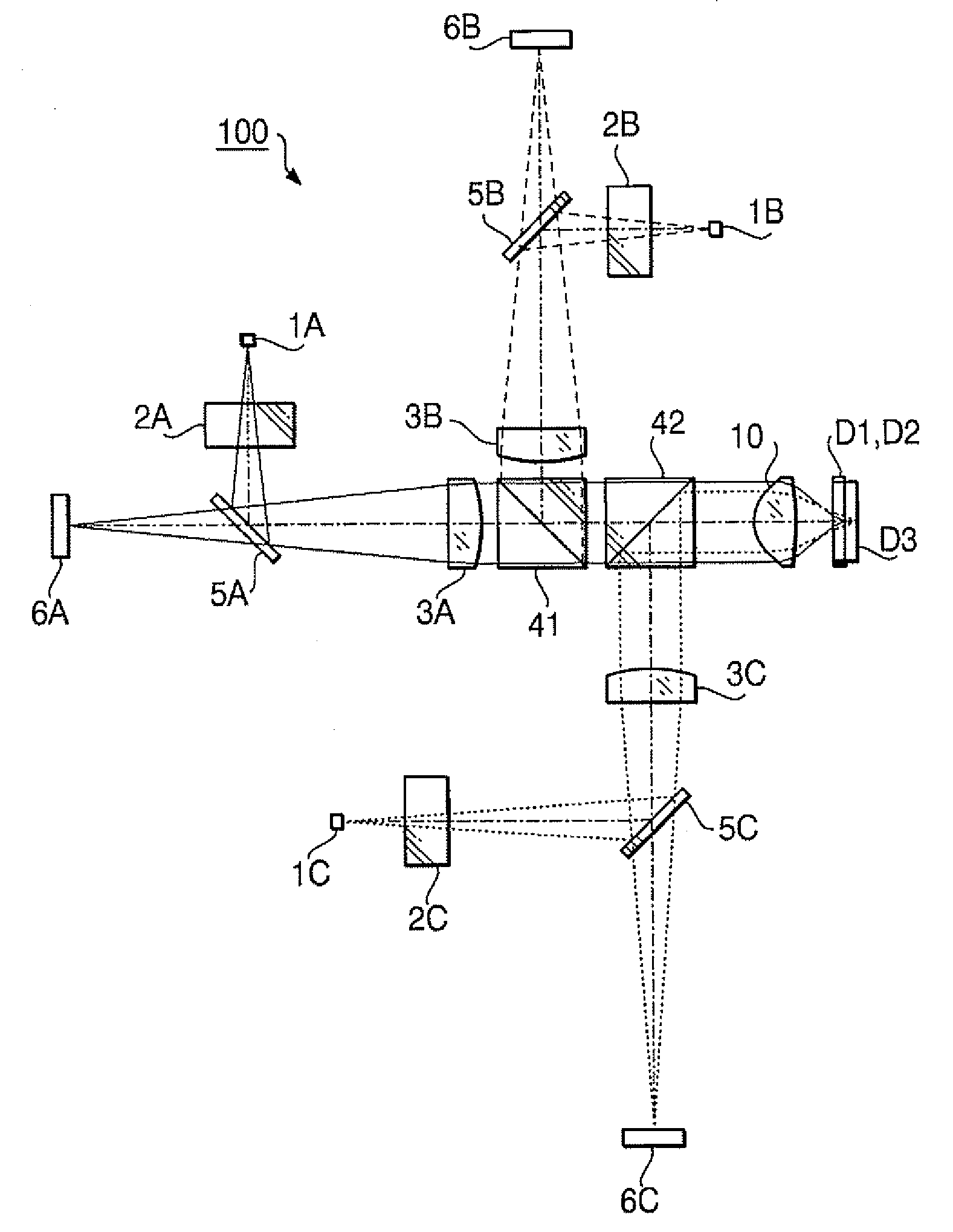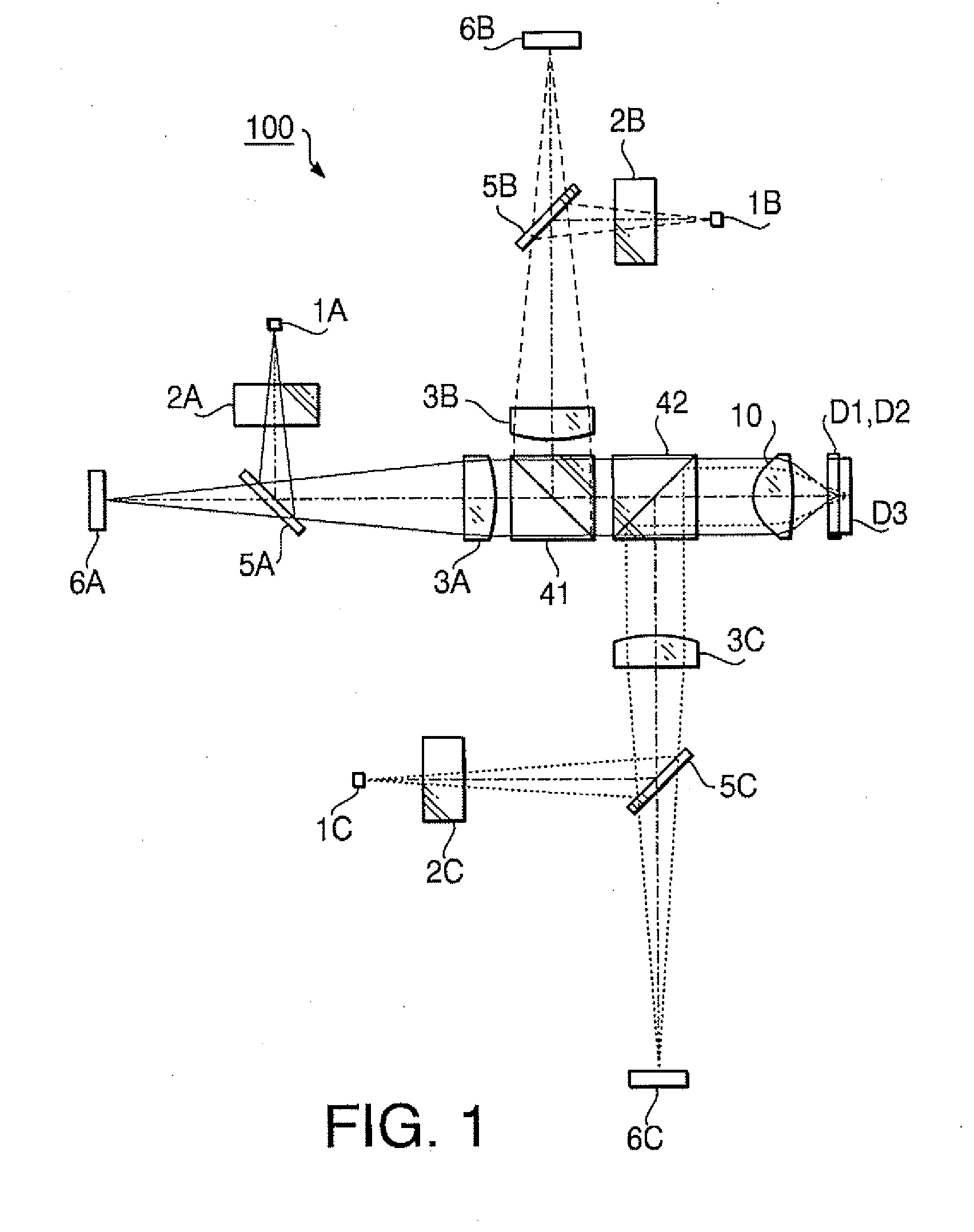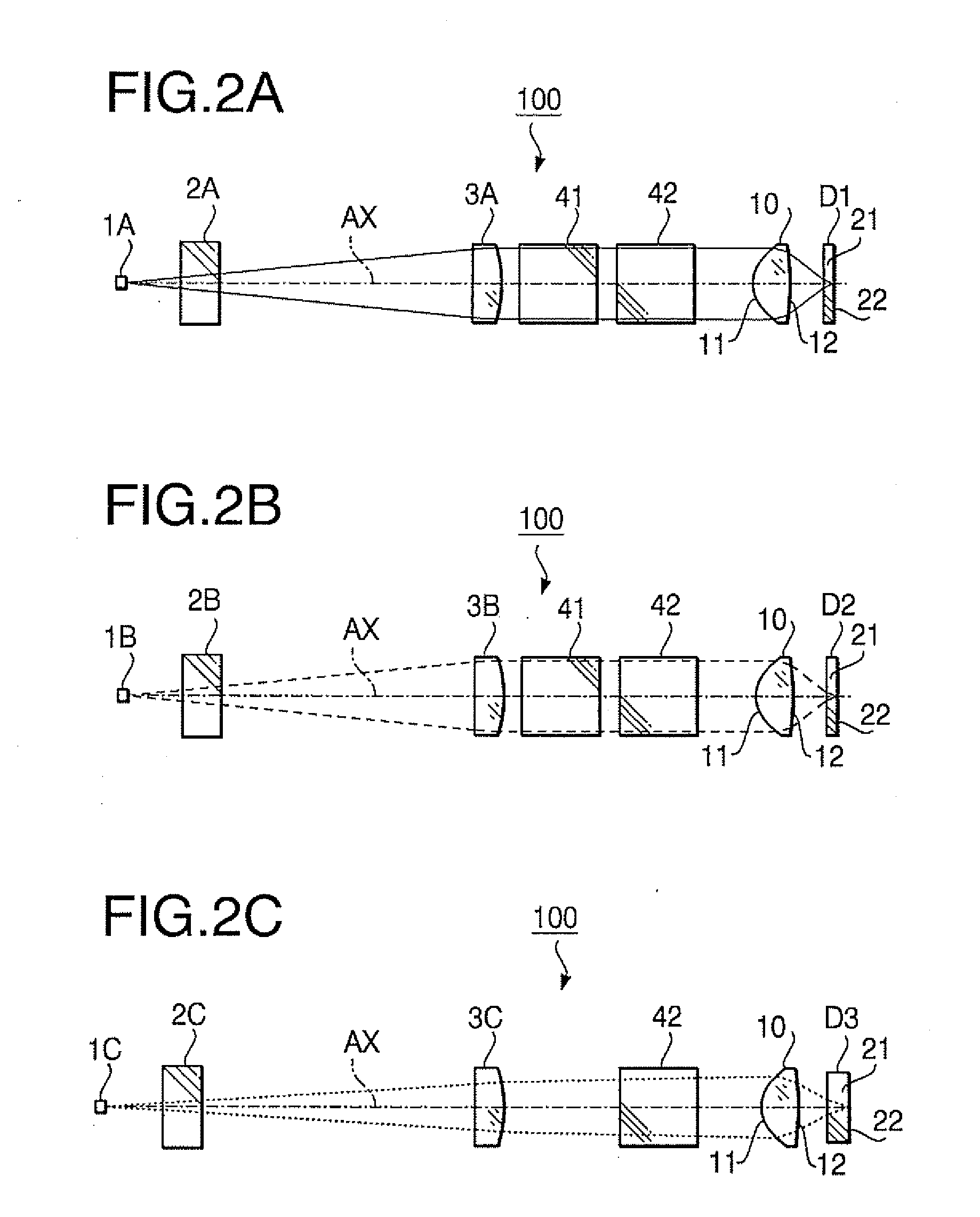Optical disc drive and objective lens for the same
a technology of optical disc drive and objective lens, which is applied in the field of objective lens, can solve the problems of reducing focusing performance, reducing the quantity corresponding to 40% usage efficiency of light, and deteriorating focusing performance, so as to reduce the diameter of the beam spot, prevent deterioration of focusing performance, and high light efficiency
- Summary
- Abstract
- Description
- Claims
- Application Information
AI Technical Summary
Benefits of technology
Problems solved by technology
Method used
Image
Examples
first example
[0164] The objective lens 10 according to the first example is provided with the phase shift structure having steps producing a single type of optical path length difference. The phase shift structure is formed on the surface 1I of the objective lens 10. Specifications of the objective lens 10 according to the first example are shown in Table 1.
TABLE 1First laserSecond laserThird laserbeambeambeamDesign wavelength (nm)405660790Focal length f (mm)3.003.113.13NA0.650.630.50magnification0.0000.000−0.026
[0165] In Table 1 (and in the following similar Tables), the design wavelength is a wavelength suitable for the recording / reproducing operation of the optical disc, f represents a focal length (unit: mm) of the objective lens 10, NA represents the numerical aperture. In Table 1, the performance specifications are indicated with regard to each of the first laser beam (the optical disc D1), the second laser beam (the optical disc D2) and the third laser beam (the optical disc D3).
[0166]...
second example
[0186] The objective lens 10 according to the second example is provided with the phase shift structure having steps producing a single type of optical path length difference. The phase shift structure is formed on the surface 1I of the objective lens 10. Specifications of the objective lens 10 according to the second example are shown in Table 12.
TABLE 12First laserSecond laserThird laserbeambeambeamDesign wavelength (nm)405660790Focal length f (mm)3.003.113.13NA0.650.630.46magnification0.0000.000−0.025
[0187] As shown by values of the magnification in Table 12, each of the first and second laser beams is incident on the objective lens 10 as a collimated beam when each of the optical discs D1 and D2 is used. When the optical disc D3 is used, the third laser beam is incident on the objective lens 10 as a diverging beam.
[0188] Table 13 shows a numerical configuration of the optical disc drive 100 when the optical disc D1 (the first laser beam) is used, Table 14 shows a numerical co...
third example
[0204] The objective lens 10 according to the third example is provided with the phase shift structure having steps producing a single type of optical path length difference. The phase shift structure is formed on the surface 11 of the objective lens 10. Specifications of the objective lens 10 according to the first example are shown in Table 23.
TABLE 23First laserbeamSecond laser beamThird laser beamDesign wavelength408660790(nm)Focal length ƒ (mm)2.252.332.35NA0.650.650.45magnification0.0000.000−0.048
[0205] As shown by values of the magnification in Table 23, each of the first and second laser beams is incident on the objective lens 10 as a collimated beam when each of the optical discs D1 and 92 is used. When the optical disc D3 is used, the third laser beam is incident on the objective lens 10 as a diverging beam.
[0206] Table 24 shows a numerical configuration of the optical disc drive 100 when the optical disc D1 (the first laser beam) is used, Table 25 shows a numerical con...
PUM
| Property | Measurement | Unit |
|---|---|---|
| refractive index | aaaaa | aaaaa |
| Abbe number vd | aaaaa | aaaaa |
| Abbe number vd | aaaaa | aaaaa |
Abstract
Description
Claims
Application Information
 Login to View More
Login to View More - R&D
- Intellectual Property
- Life Sciences
- Materials
- Tech Scout
- Unparalleled Data Quality
- Higher Quality Content
- 60% Fewer Hallucinations
Browse by: Latest US Patents, China's latest patents, Technical Efficacy Thesaurus, Application Domain, Technology Topic, Popular Technical Reports.
© 2025 PatSnap. All rights reserved.Legal|Privacy policy|Modern Slavery Act Transparency Statement|Sitemap|About US| Contact US: help@patsnap.com



